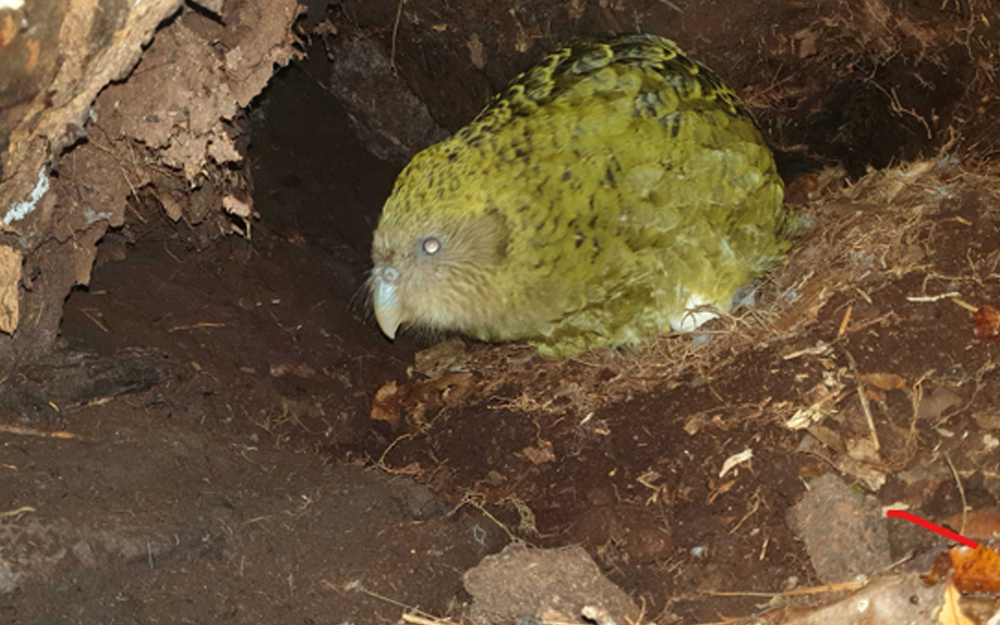First kākāpō chick for 2022 hatches
Olivia Brandt
02 February 2022, 9:02 PM
 Pearl-A-1-22 in the nest, with second chick beginning to hatch. Photo: Jake Osborne
Pearl-A-1-22 in the nest, with second chick beginning to hatch. Photo: Jake OsborneThe first kākāpō chick of the season has hatched on Whenua Hou/Codfish Island, a predator free island to the west of Stewart Island.
The new arrival brings the total kākāpō population to 202.
The birds only breed every two to three years, so breeding seasons hold high importance for the species.
Nineteen-year-old kākāpō Pearl is the mother of the chick. Kākāpō are thought to possibly be the longest-lived bird species in the world, estimated to reach 90 years of age.
The chick, named Pearl-A-1-2022, was observed on 1 February, received a health check, and appears to be in good health.

Pearl on her nest. Photo: Sarah Little
The chick’s name comes from the naming convention for the species – mother’s name, egg number, and the year.
Mother Pearl also has two other eggs, due to hatch over the next few days.
DOC Kākāpō Operations Manager Deidre Vercoe says hatching time can be nerve-wracking for staff but also wonderful. “It’s a huge reward for hard-working team members to know there is growing hope for kākāpō, with every healthy chick that hatches.”
“The kākāpō team of 2022 has a very unique challenge. That is, how to manage a significant and infrequent breeding event for a critically endangered species, in the middle of a pandemic."
“As the kākāpō population grows, we have been reducing the intensity of breeding management. The pandemic could push the reduction of this hands-on work further. Insights gained from this unique situation will provide valuable information to guide future breeding management approaches.”
DOC’s Kākāpō Recovery Team, alongside Ngāi Tahu, have worked to bring kākāpō back from the brink of extinction, growing the population from a low of 51 birds in 1995.
With continued growth of the population, DOC’s kākāpō team say future challenges will also include finding new predator-free islands and sanctuaries for the birds to live.




